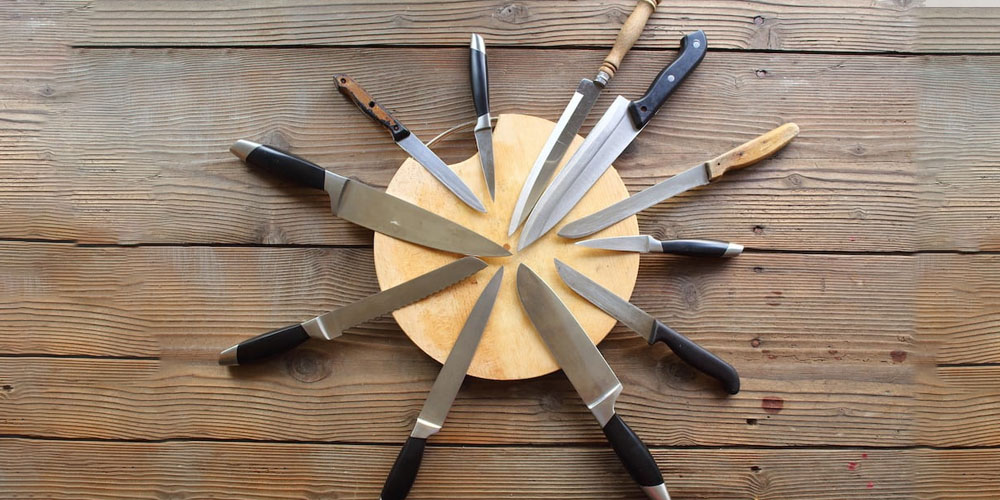If you have ever wondered about the differences between both a boning knife and a fillet knife, this is the article you should go for. After reading this article, you will learn that weather boning or fillet knife you need.
You must be thinking that any knife could cut easily; however, you must try to pick a suitable knife if you want accurate cuts of meats and fish.
Both of these kitchen knives are so identical that it’s difficult to differentiate them from each other. They do have various functions that are particular to their type; therefore, let’s differentiate these two knives to see which one you should utilise for a specific task.
Boning Knife
A boning knife is mostly used to separate the flesh from bones. In comparison to a fillet knife, it is less flexible and thicker. A boning knife’s blade has a sharp point.
Boning knife Uses
- Separate the meat from the bones.
- Peel the meat’s skin.
- Cookie dough can be cut.
- Mangoes can be cut.
- Apple’s core can be removed.
Fillet Knife
The primary function of a fillet knife is to remove the meat’s skin. Deboning a fish with a fillet knife is just possible if the fish is small. The finest Fillet knives are versatile, making them ideal for fine and intricate cuts. Avoid exerting too much power with a fillet knife because they are fragile and can shatter.
Fillet Knife Uses
Fillet knives are commonly associated with filleting fish like crappies, however, they can also be used for:
- Taking off the scales of a fish.
- Cutting citrus fruits.
- Taking off the peel of fruits.
- Trimming fat.
These knives are malleable, making them easier to control while removing the skin from the fish’s meat or removing it from the bone. To avoid an accident while performing the job, a fillet knife must be sharpened and have a tight and stable grip.
Fillet Knife VS Boning Knife
These two multi-functional kitchen knives are a must-have for making the kitchen work easier, especially when you utilise each blade appropriately to its role. These knives share a lot of similarities in terms of appearance and functionality, but they also have several variations
1. Design
A boning knife can be used for thicker cuts and heavy meats, whereas a fillet knife has been used for small cuts as well as delicate meats. Both have sharp blades that allow them to do their jobs well.
Fillet knives feature curved blades that are flexible and thinner than boning knives that have straight, broader, and sharper edges.
2. Pressure Resistance
The hardness and thickness of the blade of a boning knife are appropriate for the pressure required to work on thick meats. The fillet knife’s edge is much thinner and much more flexible as compared to the boning knife.
As a result, the fillet knife is capable of handling delicate and soft flesh and bones. You don’t have to exert much pressure on fillet knives because it can quickly break if forced.
3. Maneuverability
These knives can perform the same tasks as another, but the finished version and overall user experience are noticeably different.
Filleting a fish with a boning knife is possible, but the fillet would most likely not appear as fine and clean as if you were using a fillet knife. Similarly, A fillet knife could be used to remove the bone out of its meat; however, it will be tough due to the flexibility of the fillet knife.
4. Blade Tip
When it comes to appearance and versatility, boning knives seem to be very comparable to traditional kitchen knives. It’s a little thinner as well as longer than just a regular kitchen knife; thus; however, it could cut hard bones and meat with ease.
A fillet knife’s blade and tip are both bent upwards to make it easier to cut large meat slices.
5. Materials
Carbon steel or stainless steel is used to make both knives. Carbon steel blades are sharper; however, they must be maintained regularly to avoid corrosion.
Stainless steel blades are simpler to maintain as well as less prone to rust, but they are not sharper than carbon steel knives.
Conclusion
Boning and fillet knives have been compared. To summarize, here it is discovered that every knife has its usefulness while still being able to execute the jobs of the other due to its similarities and distinctions, as well as its limitations and strengths.










